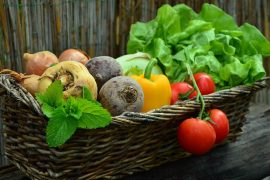Of all the foods we love, sugar is our downfall. It’s sweet and instantly satisfying. It signals great things in life, like birthday cakes and festive squares and beloved family rituals.
It is also quietly undermining our efforts to live long and healthy lives.
Sugar can damage our hearts, negatively impact our ability to survive cancer, and slow our memory and cognitive skills, as evidenced in a host of controlled scientific studies.
Everybody’s got their poison, and mine is sugarDERRICK ROSE, NBA star
A 2013 study1 published in the Journal of the American Heart Association indicated sugar not only places you at risk for heart failure, but that sugar can also impact the pumping mechanism of your heart.
Another study2 showed that too much sugar impacts the way our natural body insulin does its job, and that in turn pushes our pancreas to release even more insulin. The over-abundance of insulin prompted by the sugar impacts our cell’s susceptibility to cancer.
A 2012 study3 linked high sugar intake with memory loss and degeneration of cognition skills.
When we make a conscious decision to cut down on sugar in our diets, we immediately think we will be safe if we simply eliminate cookies, candies and cakes.
We forget the insidious nature of sugar and its ability to be hidden in so many foods we could never anticipate all the ways it enters our body. It can be lurking in whole grain bread, fat free dressings, spaghetti sauce and even plain tonic water.
The World Health Organization4 suggests that individual sugar consumption should stay below 10 percent of total calorie intake per day, with five per cent a healthier target.
They define sugar as “all sugars added to food as well as sugar naturally present in honey, syrups, fruit juices and fruit concentrates.”
Translated to the average adult diet in the United Kingdom, that means we should consume no more than about 25 grams of sugar a day, or about six to seven teaspoons.

How do you avoid hidden sugars?
Start by understanding where they are most likely to be lurking (outside of traditional pastries). Common sources of hidden sugar are salad dressings and sauces, breakfast cereal, dried fruit, flavored yogurt, flavored waters and soft drinks.
Protect yourself by reading labels and recognizing sugar under its many names. These include corn syrup, cane sugar, fruit juice concentrate, dextrose, glucose, maltodextrin, high fructose corn syrup, lactose, maltose, sorbitol, sucrose, yellow sugar, brown sugar, mannitol and xylitol, among others.
Be able to quickly do a mental translation of amounts from metric to imperial if needed. For example, four grams of sugar equals one teaspoon. If you see 40 grams of sugar in a food you are planning to consume, know instantly that eating that one food alone will push you to 10 teaspoons of sugar, exceeding your recommended daily dose.
Instead of high-sugar energy drinks, boost your alertness with water containing a slice of lemon or lime.
Remember that just because a food sounds healthy doesn’t mean that it is healthy. Granola bars can be loaded with sugar as can brown breads and milkshakes.
In summary, there is really no shortcut to finding hidden sugars. You have to be a food detective if you plan to protect your health in the long-term.
For more straightforward and useful evidence- based health advice, consult The Body Manual at ….
Sources:
- Journal of the American Heart Association
http://jaha.ahajournals.org/content/2/3/e004796
- Oxford Journals
Http://jnci.oxfordournals.org/content/104/22/1702/
- Study linking excess of sugar with deficiencies in memory
http://jp.physoc.org/content/590/10/2485
- World Health Organization





